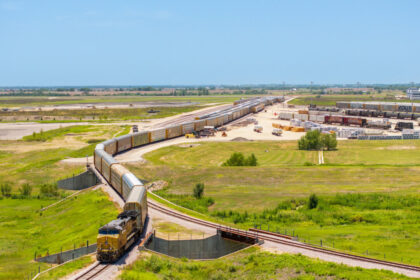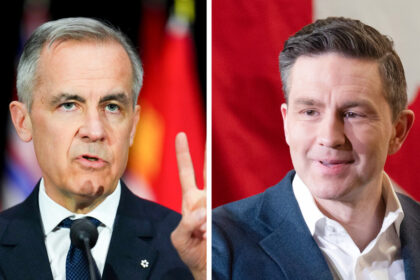This year marked the 50th anniversary of China-EU diplomatic relations. Over the years, the relationship has centered on trade cooperation mechanisms. The foundation for strong and structured economic relations was laid 40 years ago, in 1985, with the Trade and Cooperation Agreement between the two. Relations took a new turn with the turning of the 21st century, when China and the EU established a comprehensive strategic partnership in 2003.
Today, that not-so-distant past looks like another era. Over the past few years, China-EU ties have developed into a systematic rivalry, which has become even more complex during the past few months after China introduced new license requirements for the export of rare earth elements and related products in April.
Tensions mounted to a new high on September 30, when the government of the Netherlands announced it was taking control of the Chinese-owned chipmaker Nexperia. In doing so, the Netherlands invoked the Goods Availability Act, citing “serious governance shortcomings and actions.” According to the Dutch government, the decision was taken in order “to prevent a situation in which the goods produced by Nexperia (finished and semi-finished products) would become unavailable in an emergency,” which could “pose a risk to Dutch and European economic security.”
The decision followed the United States raising security concerns about Wingtech, the firm’s Chinese owner. In June, Washington warned the Dutch authorities that Nexperia may not be able to export to the United States with Zhang Xuezheng holding its chief executive position. After the Netherlands’ decision, China stopped all rare earth exports from Nexperia’s factories in the country in retaliation, which threatened to disrupt production in Europe.
The EU member states accused China of weaponizing rare earth exports and called the Chinese move economic coercion. China, however, blamed the Dutch government for the disruption in the supply of semiconductors. “The source and responsibility for the current chaos in the global semiconductor supply chain lie with the Netherlands,” a spokesperson for the Chinese Ministry of Commerce said.
According to an International Energy Agency (IAE) report, China accounted for approximately 60 percent of rare earth minerals in 2024, with a greater dominance in the separation and refining stages. China produces approximately 91 percent of the world’s processed rare earths. The EU, with virtually no domestic rare earth production, is heavily dependent on China for the supply of rare earth materials. With supplies disrupted due to China’s export controls, the EU will not be able to achieve its industrial as well as climate goals as the rare earths are significant inputs for the energy, automotive, defense, and digital industrial sectors.
The EU’s trade commissioner, Maros Sefcovic actively sought to de-escalate the dispute over rare earths. On October 21, he held a phone call with his Chinese counterpart, Commerce Minister Wang Wentao, to discuss the export restrictions on rare earth. Sefcovic called that conversation “constructive,” adding, “We have no interest in escalation.” Sefcovic said that he also invited his Chinese counterpart to visit Brussels to find “a prompt resolution” to the dispute. However, the planned meeting was cancelled on October 24 as the European Commission opted to hold an expert-level discussion over the issue of China’s control on rare earth exports.
The breakthrough finally came late last week, on November 8, when China granted exemptions from licensing requirements, which would stabilize the supply of rare earth materials. Sefcovic announced in a post on X that China’s Ministry of Commerce “will grant exemptions from licensing requirements to any exporter, provided that it is declared that the goods are intended for civilian use.” He further said that “this measure takes effect immediately.”
Regarding diffusing the tensions between the Netherlands and China specifically, he said that he was in continuous “close engagement with both” in order to “work towards a lasting, stable, predictable framework that ensures the full restoration of semiconductor flows.”
Just prior to that, on November 6, the Dutch Minister for Economic Affairs Vincent Karremans said in a post on X, “Given the constructive nature of our talks with the Chinese authorities, the Netherlands trusts that the supply of chips from China to Europe and the rest of the world will reach Nexperia’s customers over the coming days.” He added that the recent trade and economic deal between the United States and China “would enable resumption of exports from Nexperia’s facilities in China, reinstating the critical supply of these critical legacy chips worldwide.”
However, the Chinese Ministry of Commerce disputed that account. The Chinese ministry said that “no concrete actions have been taken by the Netherlands” that could “restore the stability of the global semiconductor supply chain.” Moreover, it said, referring to its announcement of November 1, that China “would grant exemptions to relevant exports that meet the conditions.” For Beijing, revoking Nexperia’s seizure by the Dutch government would be a decisive factor to resolve the current supply disruption.
Despite this chaotic situation, China is still hoping to revive its long-stalled investment deal with the EU, The EU-China Comprehensive Agreement on Investment, which was frozen almost immediately after an in-principle agreement was reached in December 2020. In early 2021, the European Parliament refused to ratify it, citing Chinese sanctions on EU politicians that were imposed after Western sanctions against Chinese officials in connection to mass detentions of Muslim Uyghurs in Xinjiang.
Upon asking whether China planned to renegotiate the investment deal with the EU, He Yadong, a spokesperson at the Chinese Ministry of Commerce, said that “China is willing to deepen mutually beneficial cooperation with the EU and explore the possibility of negotiating various economic and trade agreements, including investment agreements.” While referring to the EU’s series of free trade agreements, He said that the EU is seeking to diversify its exports; thus, “China and the European Union share extensive common interests and there are significant areas for cooperation in the economic and trade sectors.”
Even though the relations between the EU and China during the current year have remained complex, Brussels and Beijing have maintained continuous engagement amid the U.S. tariffs, which brought the two into closer economic alignment.
Despite this push factor, and last week’s breakthrough vis-à-vis the supply of rare earth materials, the relations between the two are still far from being normal. Several factors continue to weigh on the relationship, including China’s support for Russia, particularly with regards to the invasion of Ukraine and potential gray zone activities in Europe; the EUs concerns over human rights abuses in China, and issues of Chinese cyber espionage in the European Union. China, on the other hand, accuses the EU of unfair “trade and investment barriers” and stirring up trouble in the South China Sea.
The recent row over rare earths vividly depicts that China is weaponizing its supplies to use them as a tool for economic coercion. This puts the EU in a losing position given its asymmetric ties with China, with the trade deficit amounting to approximately 305 billion euros ($330 billion) in 2024. The EU’s dependency on Chinese rare earths specifically is a vulnerability that Beijing is keenly aware of and clearly willing to use. Even though the EU has recently announced its RESourceEU plan to escape dependency on China, it still has a long way to go to secure alternatives to manage the supply of rare earth materials.






